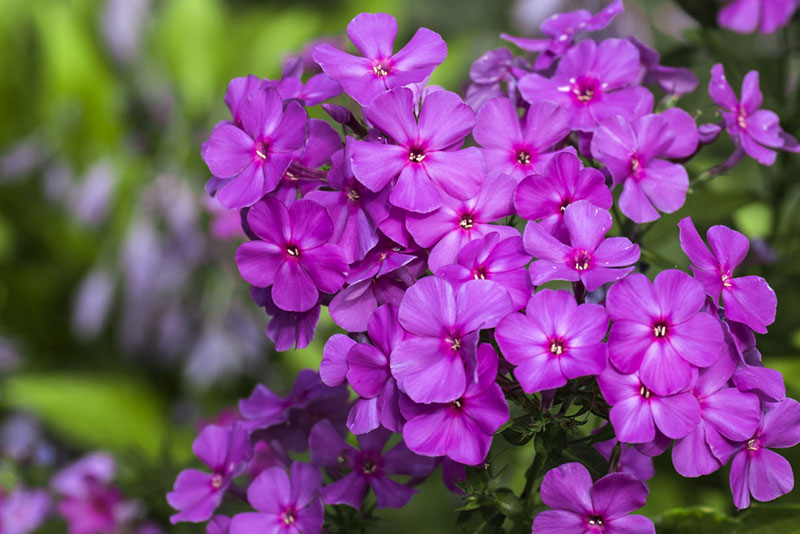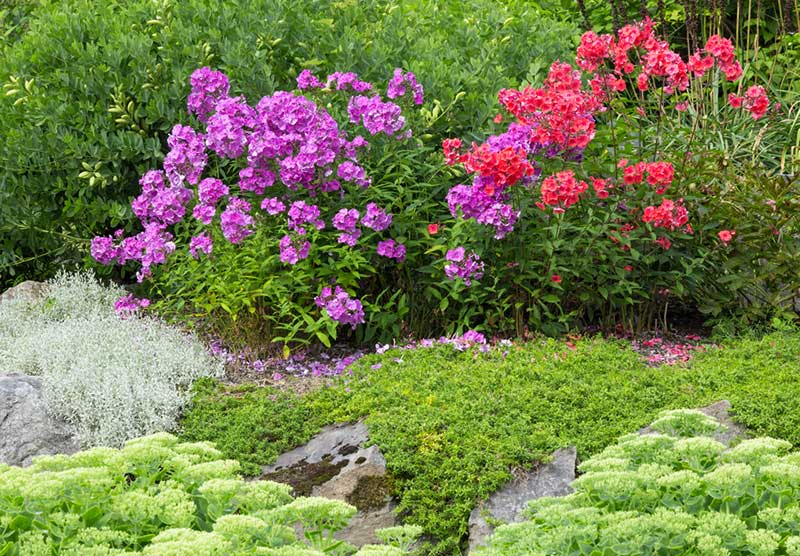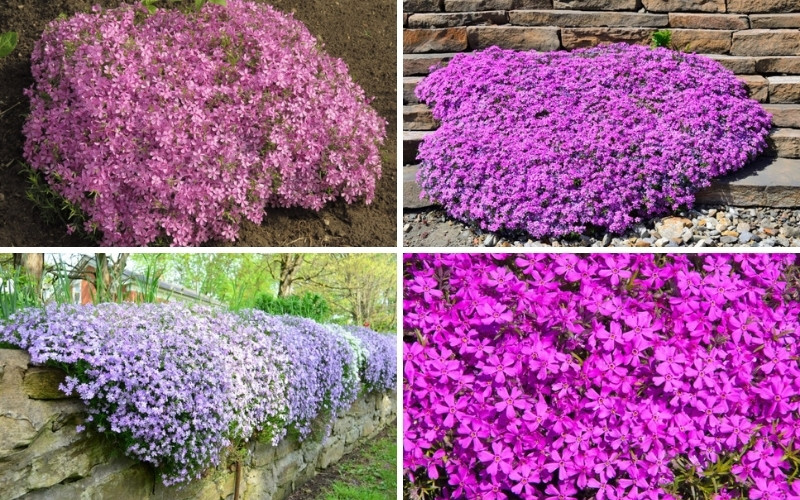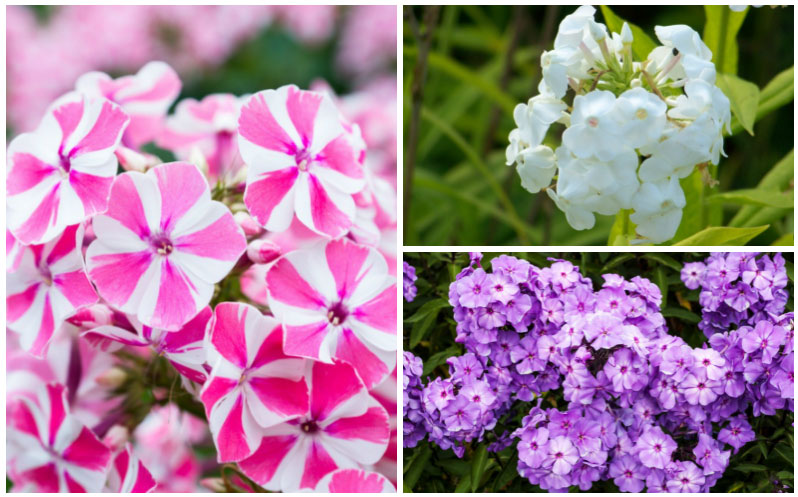
Phlox is a plant that produces delicate star-shaped masses of white, pink, red, purple or blue flowers. A blooming ornamental beloved by birds and butterflies, it’s a beautiful addition to any garden. Best of all, phlox is a fragrant perennial plant that has an extended blooming period from July through September. Originally a wildflower, phlox has also become a cultivated flowering plant available in many colors and varieties.
Here are 10 tips for growing phlox in your garden.
1. Choosing Your Plant
If you’re going to use phlox plants in your garden, choose the color and height that fits best with your landscaping plan. Some low-growing varieties make a lovely ground cover, while taller plants can be used as a backdrop for shorter ones. If you’re buying phlox from a home and garden store, it’s best to pick a plant that has more buds than blooms.
Also, check for these things:
• Damp soil
• Healthy, firm stems
• No roots showing at the container bottom
• No discoloration of leaves or blooms
2. Choosing Your Planting Area
Phlox is hardy in growing zones 4-8 and requires minimal maintenance to come back year after year. You can also start phlox plants inside from seeds in the late winter, and transplant them to the garden after the last frost. Use high-quality potting soil in a container that drains well, and transplant the entire contents of the container when moving the plants to your garden. You can also spread seeds lightly across the soil and cover them with a 1/8-inch layer of soil, then thin the seedlings when they emerge.
3. Natural light
Phlox does well in full sunlight, but dappled shade is fine for many varieties since phlox is originally a woodland flower used to the shade from trees. The plants will need six hours of full sun a day for the best results, but different varieties have a range of shade tolerances. There are low-growing varieties, such as creeping phlox and woodland phlox, that do well in shady areas of the landscape. You can find cultivars that do well in open shade or direct sunlight, for cheerful blooms everywhere in your garden.

4. Soil
Phlox does best in well-drained, enriched soil that’s on the alkaline side. If the soil in your yard or garden tends to be acidic, you can add some lime when setting the plants. After the last frost, loosen the top 12-15 inches of soil in the bed with a sturdy garden rake or spade, and mix in compost and a light sprinkling of lime if required. The compost will not only provide nutrients for the phlox, but it will also help get oxygen to the roots. If drainage is an issue, add some volcanic rock like perlite or vermiculite to the soil while you’re at it. Dig a hole that’s twice the diameter of each pot, and place plants about a foot apart. Firmly pack the space around each plant with the improved soil mixture you’ve created.
5. Water
Moist, well-drained soil is what you need to grow healthy phlox plants. Mulch the flower beds well with bark or compost to retain as much moisture as possible. Planting phlox on a slope helps with drainage, and these flowering plants will do well on their own without much watering. If you do water during dry spells, add water at the base of the plants to discourage the spread of powdery mildew. You can also cut down on the possibility of your plants getting this and other diseases by choosing cultivars that have been bred for resistance.
6. Environment
One good trait of phlox is its resistance to being eaten by local deer populations. This is a bonus, as wild deer love to graze on tender flower blossoms. Phlox does well when planted on a sloping, south-facing bed that receives plenty of sunlight. This is also a great way to showcase the blooms. If you place a short retaining wall at the edge of the flower bed, the blooms will spill over the top beautifully. Creeping phlox is useful as a border plant in front of taller flowers or shrubs, and it also helps prevent soil erosion. A bonus is that the blooms attract hummingbirds, bees and butterflies to your yard.
7. Temperature & Humidity
These garden favorites do well in high humidity, one reason that they thrive in the southeast U.S. Humidity in the air helps keep phlox plants from losing moisture and wilting. They don ‘t do well with extreme temperature fluctuations, however, which is why they’re recommended only for growing zones 4-8. Although phlox can be planted outdoors in zones 3 and 9, you may not get good results from your efforts.
8. Feeding
Phlox grows easily without the addition of fertilizer. Adding compost and aged manure to your planting beds will provide all the nutrients necessary for growing healthy plants. Using chemical fertilizer won’t make the plants spread any faster, but it may cause the stems to become leggy. This diverts energy that’s needed for growth and disease resistance. In the fall, after trimming the stems, add a thick layer of compost to protect the plants over the winter. It will also break down into nutrients that they can absorb in the spring.
9. Pruning
If you’re using phlox as a border plant, it’s fine to trim any edges that hang over a sidewalk or driveway. When all of the blooms have faded away, use shears to trim the foliage back. This will help the plant stay hardy for the next growing season, and it also encourages more blooms the next spring.
10. Propagation
Phlox is native to the United States, especially the southeast, spreads easily, and has a variety of colors through natural hybridization. Because phlox is self-seeding, the plants will continue to expand their footprint in your garden year after year. If you’re trying to maintain one specific color, however, new seedlings should be removed, as other bloom colors will emerge over time. You can transplant root cuttings, and tall phlox plants should be divided and replanted about every three years.






